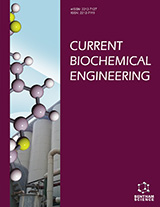Abstract
Natural fibres have gained huge attention from researchers in the field of
composite manufacturing in automotive applications due to their low cost,
biodegradability, availability, and high performance. However, due to their high
hydroxyl content of cellulose, natural fibres are susceptible to water absorption, which
invariably affects the mechanical properties of the composite adversely. Researchers
have proven that nanomaterials such as Nano silica Carbide (n-Sic) or nanoclay mixed
with the polymer composites can overcome the problem. This study investigates the
mechanical and microstructural properties of tiger nut fibres reinforced polymer
composites tailored to the automotive application. Tiger nut fibres mixed with nanoclay
to the size of 50≤μm were used to reinforce epoxy in three levels of loading 2, 4, 6%
respectively. Mechanical and microstructural properties of the composites produced
were examined. The results showed an increasing trend of 84, 99, 102 MPa and 110,
125, 138 MPa for tiger nut-epoxy and tiger nut-nanoclay epoxy composites,
respectively, in the tensile strength. Also, an increasing trend of 80, 84, 88 BHV and
87, 94, 98 BHV were observed for tiger nut-epoxy and tiger nut-nanoclay epoxy
composites, respectively, for hardness. Water absorption capacity decreases as the
percentage weight fractions of the reinforcement increases but increases as the duration
of immersion in boiling water increases. The microstructures showed good interfacial
adhesion between reinforcement and polymer matrix when mixed with nanoclay. Tiger
nut fibres show a sustainable material useful for automotive applications.
Keywords: Microstructure, Nanoclay, Nanomaterials, Natural fibres, Tigernut fibres.






















